Ditapis dengan
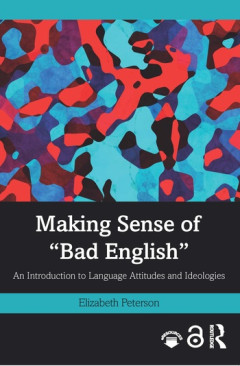
Making sense of "bad English" :an introduction to language attitudes and ideo…
Why is it that some ways of using English are considered "good" and others are considered "bad"? Why are certain forms of language termed elegant, eloquent or refined, whereas others are deemed uneducated, coarse, or inappropriate? Making Sense of "Bad English" is an accessible introduction to attitudes and ideologies towards the use of English in different settings around the world. Outlining …
- Edisi
- -
- ISBN/ISSN
- 9781138237469
- Deskripsi Fisik
- xxiv, 166p. : ill.
- Judul Seri
- -
- No. Panggil
- 427 PET m

The Roots of verbal meaning
- Edisi
- -
- ISBN/ISSN
- 9780198855781
- Deskripsi Fisik
- 288 p.; 23 cm.
- Judul Seri
- -
- No. Panggil
- 412.09 BEA r
- Edisi
- -
- ISBN/ISSN
- 9780198855781
- Deskripsi Fisik
- 288 p.; 23 cm.
- Judul Seri
- -
- No. Panggil
- 412.09 BEA r

Semantics and morphosyntactic variation:qualities and the grammar of property…
- Edisi
- -
- ISBN/ISSN
- 9780198744580
- Deskripsi Fisik
- 192 p.; 23 cm.
- Judul Seri
- -
- No. Panggil
- 415 KOO s
- Edisi
- -
- ISBN/ISSN
- 9780198744580
- Deskripsi Fisik
- 192 p.; 23 cm.
- Judul Seri
- -
- No. Panggil
- 415 KOO s

Inquisitive semantics
There is an age-old tradition in linguistics and philosophy to identify the meaning of a entence with its truth-conditions. This can be explained by the fact that linguistic and philosophical investigations are usually carried out in a logical framework that was originally designed to characterize valid reasoning. Indeed, in order to determine whether an argument is valid, it suffices to know t…
- Edisi
- -
- ISBN/ISSN
- 9780198814788
- Deskripsi Fisik
- 240 p.; 23 cm.
- Judul Seri
- -
- No. Panggil
- 412 GRO i
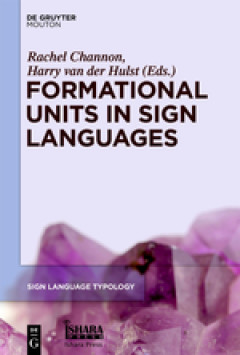
Formational units in sign languages
Sign languages and spoken languages have many fascinating differences, caused primarily by the reaction of the human mind to different modalities, but also by some important social differences. This book examines the effects of these and other differences on sign language phonology and phonetics using observation, experimentation and theory. Languages examined include Asian, Middle Eastern, Eur…
- Edisi
- -
- ISBN/ISSN
- 9781614510680
- Deskripsi Fisik
- -
- Judul Seri
- -
- No. Panggil
- 414 FOR f

Sites of translation :what multilinguals can teach us about digital writing a…
Winner of the 2016 Sweetland Digital Rhetoric Collaborative Book Prize Sites of Translation illustrates the intricate rhetorical work that multilingual communicators engage in as they translate information for their communities. Blending ethnographic and empirical methods from multiple disciplines, Laura Gonzales provides methodological examples of how linguistic diversity can be studied in pra…
- Edisi
- -
- ISBN/ISSN
- 9780472124343
- Deskripsi Fisik
- -
- Judul Seri
- -
- No. Panggil
- 418.02 GON s

Linguistic variation, identity construction and cognition
Speakers use a variety of different linguistic resources in the construction of their identities, and they are able to do so because their mental representations of linguistic and social information are linked. While the exact nature of these representations remains unclear, there is growing evidence that they encode a great deal more phonetic detail than traditionally assumed and that the phon…
- Edisi
- -
- ISBN/ISSN
- 9783946234258
- Deskripsi Fisik
- 244 p.; 23 cm.
- Judul Seri
- -
- No. Panggil
- 414 KAT l
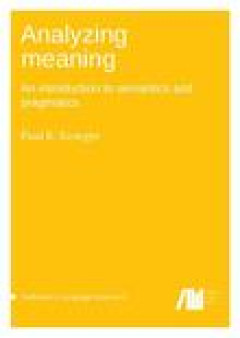
Analyzing meaning
This book provides an introduction to the study of meaning in human language, from a linguistic perspective. It covers a fairly broad range of topics, including lexical semantics, compositional semantics, and pragmatics. The chapters are organized into six units: (1) Foundational concepts; (2) Word meanings; (3) Implicature (including indirect speech acts); (4) Compositional semantics; (5) Moda…
- Edisi
- -
- ISBN/ISSN
- 9783961100354
- Deskripsi Fisik
- -
- Judul Seri
- -
- No. Panggil
- 412 KRO a

Analogical classification in formal grammar
The organization of the lexicon, and especially the relations between groups of lexemes is a strongly debated topic in linguistics. Some authors have insisted on the lack of any structure of the lexicon. In this vein, Di Sciullo & Williams (1987: 3) claim that “[t]he lexicon is like a prison – it contains only the lawless, and the only thing that its inmates have in commonis lawlessness”.…
- Edisi
- -
- ISBN/ISSN
- 9783961101870
- Deskripsi Fisik
- -
- Judul Seri
- -
- No. Panggil
- 425 NAR a

Adjective attribution
This book is the first typological study of adjective attribution marking. Its focus lies on Northern Eurasia, although it covers many more languages and presents an ontology of morphosyntactic categories relevant to noun phrase structure in general. Beside treating synchronic data, the study contributes to historical linguistics by reconstructing the origin of new types specifically in the lan…
- Edisi
- -
- ISBN/ISSN
- 9783944675657
- Deskripsi Fisik
- xiv, 301 p.; 23 cm.
- Judul Seri
- -
- No. Panggil
- 414 RIE a

Cohesion, coherence and temporal reference from an experimental corpus pragma…
This open access book provides new methodological and theoretical insights into temporal reference and its linguistic expression, from a cross-linguistic experimental corpus pragmatics approach. Verbal tenses, in general, and more specifically the categories of tense, grammatical and lexical aspect are treated as cohesion ties contributing to the temporal coherence of a discourse, as well as to…
- Edisi
- -
- ISBN/ISSN
- 9783319967523
- Deskripsi Fisik
- 319 p.; 23 cm.
- Judul Seri
- -
- No. Panggil
- 401.43 GRI c

Individual differences in speech production and perception
Inter-individual variation in speech is a topic of increasing interest both in human sciences and speech technology. It can yield important insights into biological, cognitive, communicative, and social aspects of language. Written by specialists in psycholinguistics, phonetics, speech development, speech perception and speech technology, this volume presents experimental and modeling studies t…
- Edisi
- -
- ISBN/ISSN
- 9783653963830
- Deskripsi Fisik
- 284 p.; 23 cm.
- Judul Seri
- -
- No. Panggil
- 414 IND i

The Expression of gender
Gender is a fascinating category, which has grown steadily in importance across the humanities and social sciences. The book centres on the core of the category within language. Each of the seven contributions provides an independent account of a key part of the topic, ranging from gender and sex, gender and culture, to typology, dialect variation and psycholinguistics.
- Edisi
- -
- ISBN/ISSN
- 9783110307337
- Deskripsi Fisik
- 230 p.; 22 cm.
- Judul Seri
- -
- No. Panggil
- 401.43 CAR e
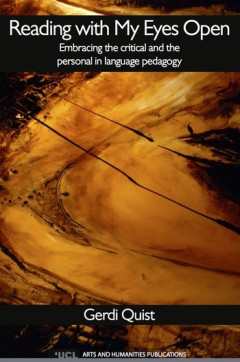
Reading With My Eyes Open:Embracing the critical and the personal in language…
Untangling the various approaches to language teaching and their history, Gerdi Quist maps recent thinking in language studies at university. Using an interdisciplinary theoretical framework, drawn from educational philosophy, cultural studies, intercultural studies and language pedagogy, the author discusses the many tensions and currents in contemporary language teaching. The author puts forw…
- Edisi
- -
- ISBN/ISSN
- 9781909188228
- Deskripsi Fisik
- ix, 198p. : ill.
- Judul Seri
- -
- No. Panggil
- 418.00711 QUI r

Vocabulary development
Knowledge of word meanings is critical to success in reading. A reader cannot fully understand a text in which the meaning to a significant number of words is unknown. Vocabulary knowledge has long been correlated with proficiency in reading. Yet, national surveys of student vocabulary knowledge have demonstrated that student growth in vocabulary has been stagnant at best. This volume offers ne…
- Edisi
- -
- ISBN/ISSN
- 9783038977353
- Deskripsi Fisik
- X, 142 p.
- Judul Seri
- -
- No. Panggil
- 428.81 VOC v

Metacognition in language learning and teaching
The Open Access version of this book, available at https://www.taylorfrancis.com/books/e/9781351049139, has been made available under a Creative Commons Attribution-Non Commercial-No Derivatives 4.0 license. This volume offers an exhaustive look at the latest research on metacognition in language learning and teaching. While other works have explored certain notions of metacognition in language…
- Edisi
- -
- ISBN/ISSN
- 9781351049146
- Deskripsi Fisik
- XIII, 269 p.
- Judul Seri
- -
- No. Panggil
- 418.0071 MET m

Dependencies in language:On the causal ontology of linguistic systems
Dependency is a fundamental concept in the analysis of linguistic systems. The many if-then statements offered in typology and grammar-writing imply a causally real notion of dependency that is central to the claim being made—usually with reference to widely varying timescales and types of processes. But despite the importance of the concept of dependency in our work, its nature is seldom def…
- Edisi
- -
- ISBN/ISSN
- 9783946234661
- Deskripsi Fisik
- 215 p.
- Judul Seri
- -
- No. Panggil
- 400 ENF d
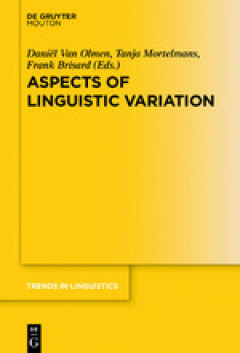
Aspects of Linguistic Variation
This volume brings together papers on linguistic variation. It takes a broad perspective, covering not only crosslinguistic and diachronic but also intralinguistic and interspeaker variation, and examines phenomena ranging from negation and TAM over connectives and the lexicon to definite articles and comparative concepts in well- and lesser-known languages. The collection thus contributes to o…
- Edisi
- -
- ISBN/ISSN
- 9783110607963
- Deskripsi Fisik
- 278 p.
- Judul Seri
- -
- No. Panggil
- 415 VAN a
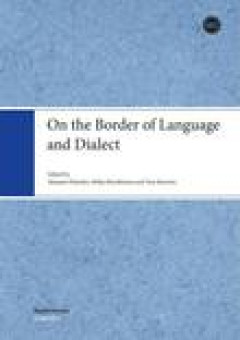
On the border of language and dialect
This volume considers the linguistic borders between languages and dialects, as well as the administrative, cultural and mental borders that reflect or affect linguistic ones; it comprises eight articles examining the mental borders between dialects, dialect continua and areas of mixed dialect, language ideologies, language mixing and contact-induced language change. The book opens with Denni…
- Edisi
- -
- ISBN/ISSN
- 9789518580037
- Deskripsi Fisik
- 259p. : ill. ; 25 cm.
- Judul Seri
- -
- No. Panggil
- 417.2 ONT o

Sign language research, uses and practices. Crossing views on theoretical and…
The uses and practices of sign languages are strongly related to scientific research on sign languages and vice versa. Conversely, sign linguistics cannot be separated from Deaf community practices, including practices in education and interpretation. Therefore, the current volume brings together work on sign language interpreting, the use of spoken and sign language with deaf children with coc…
- Edisi
- -
- ISBN/ISSN
- 9781614511472
- Deskripsi Fisik
- ix, 174 p.; 22 cm.
- Judul Seri
- -
- No. Panggil
- 418 SIG s
 Karya Umum
Karya Umum  Filsafat
Filsafat  Agama
Agama  Ilmu-ilmu Sosial
Ilmu-ilmu Sosial  Bahasa
Bahasa  Ilmu-ilmu Murni
Ilmu-ilmu Murni  Ilmu-ilmu Terapan
Ilmu-ilmu Terapan  Kesenian, Hiburan, dan Olahraga
Kesenian, Hiburan, dan Olahraga  Kesusastraan
Kesusastraan  Geografi dan Sejarah
Geografi dan Sejarah